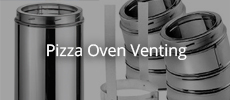Originally posted by stonecutter
View Post
X
-
Re: 3:1:1:1
Yes that's true. I told the pottery story to illustrate a point about clay not undergoing change in state from ambient to 500C Actually a modular oven that I built was subjected to a cyclone and was completely flooded. The whole thing was totally underwater from the tidal surge. After drying out it fired perfectly well and there was little erosion of the refractory mortar which was simply a mix of 50/50 sand, fireclay.Last edited by david s; 03-18-2013, 07:14 AM.
-
Re: 3:1:1:1
Oh and the clay wasn't being called cement, but cementitious, having properties of cement.Originally posted by david s View PostOk, so if it's not cement or aggregate, it's somewhere in between and doesn't count. So lets just call it sticky stuff and move on.
Moving on... great idea. Maybe the new ratio can be called 3:1:1:? or 6:1:1:?
Leave a comment:
-
Re: 3:1:1:1
After this point, everything else is moot..because if you built an oven that gets wet enough to ruin your mortar, it was your fault not the physical properties of the material. And, it would take a lot of continuous soaking to reach that failure point too.Originally posted by david s View PostFrom ambient to 500 C which is the range we fire in, there is no physical change to clay and it will return to mud if soaked and abraded....
Leave a comment:
-
Re: 3:1:1:1
The fireclay mix still has not set, so I think it is safe to assume that it is not hydraulic.
Leave a comment:
-
Re: 3:1:1:1
From ambient to 500 C which is the range we fire in, there is no physical change to clay and it will return to mud if soaked and abraded. An example of this is pottery fired in a sawdust kiln which typically reaches around 600C. On parts of the pots that did not receive quite enough heat, ie below 573 C the clay can be dissolved if soaked and scrubbed while the rest of the pot has been "fired" and made permanent. This change takes place during the firing not after it.Originally posted by stonecutter View PostAren't we talking about clay used in the oven builds? Clay changes it's physical property after firing. And, I have never seen or heard of clay that was fired lose it's binding property from excess moisture. .
By the way do not be tempted to fire a WFO to over 600 C in an effort fire the clay in the mortar. There are lots of different thermal expansions of different materials that increase their expansion around these temperatures and it is not possible in a WFO to control a slow rise. Expect some cracking if you attempt this.
Leave a comment:
-
Re: 3:1:1:1
At a 3:1:1:1 or 6:1:1:1 ratio it does not count as either.
Leave a comment:
-
Re: 3:1:1:1
Aren't we talking about clay used in the oven builds? Clay changes it's physical property after firing. And, I have never seen or heard of clay that was fired lose it's binding property from excess moisture.Originally posted by wotavidoneMaybe not, but it certainly means that it can't be considered cementitious in the general sense of the word, and any binding properties it has are reversable by excess moisture.
Bottom line, when counting out a ratio for refractory mix..you can't say clay is an aggregate. Because clay does fit the general definition of a cementitious material. And, as mentioned earlier, some clay can contain minerals ( iron rich silicious ..I'm waiting to hear more from Erik on this,T) which give it hydraulic properties...which, by definiton, would then make it cementitious.
Semantics aside...when you include clay in the ratio, it does not count as part of the aggregate number.
Leave a comment:
-
Re: 3:1:1:1
A hydraulic one. In the case of the Italian tradition they are volcanic pozzolans, highly siliceous. There are several ways to do it however, and limestone/lime is another way to achieve a hydraulic set to a cementious material.
Leave a comment:
-
Re: 3:1:1:1
It is not hydraulic, that is, it is unable to set in the presence of 100 percent humidity. Nominally, clays are considered a binder, but not cementious.
Leave a comment:
-
Re: 3:1:1:1
The fireclay mix has still not set, which indicates to me that it has no or very little hydraulic properties.
Leave a comment:
-
Re: 3:1:1:1
And just to be clear, I am not guessing or extrapolating, I have been to the plant and observed the process.
Leave a comment:
-
Re: 3:1:1:1
Exactly, it is dried, pulverized and ground, but not run through the kiln.
Leave a comment:
-
Re: 3:1:1:1
So any firing it undergoes is merely to dry it. This is quite different from the common understanding of "fired" which is the irreversible change that takes place at quartz inversion 573COriginally posted by Tscarborough View PostFireclay is fired, but not to the point that it undergoes the change that would make it grog.Last edited by david s; 03-17-2013, 05:55 PM.
Leave a comment:





Leave a comment: